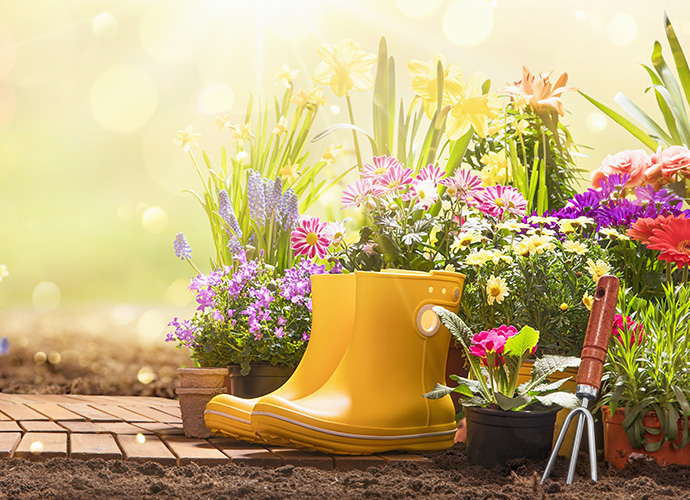As the frosty mantle of winter begins to thaw, it’s time to turn our thoughts to the vibrant hues and fresh scents of spring. Preparing your garden for this season of renewal is not just about embracing the beauty it brings; it’s about rejuvenating your outdoor space, encouraging growth, and laying the groundwork for a lush, thriving garden. At Nicholas Humphreys, we understand the importance of a well-kept garden in enhancing your home’s appeal. In this article, we’ll guide you through essential tips to get your garden spring-ready, from clearing winter debris to planting and beyond.

Clearing Winter Debris
The first step in awakening your garden from its winter slumber is a thorough cleanup. Winter’s harshness can leave behind a collection of fallen branches, dead foliage, and other debris that can smother new growth if not removed. Equip yourself with a sturdy rake and gloves to gently clear your garden beds, lawns, and paths. This not only tidies up your garden but also prevents the proliferation of pests and diseases that can hide in the detritus.
Soil Care and Preparation
Healthy soil is the foundation of a thriving garden. Begin by testing your soil’s pH to determine if any amendments are needed to create the ideal environment for your plants. Incorporate organic matter like compost or well-rotted manure to enrich the soil, improve its structure, and enhance its water-retention capabilities. Tilling the soil gently can help integrate the organic matter and aerate the ground, promoting healthy root growth.
Pruning and Cutting Back
Pruning is a critical spring task that invigorates plants by removing dead or diseased wood and encouraging new growth. Shrubs that flower in summer benefit from spring pruning, as do certain perennials that need cutting back to ground level to allow fresh shoots to emerge. However, be cautious with spring-flowering plants, as pruning them too early can remove emerging buds. Always use clean, sharp tools to make clean cuts that heal quickly.
Planning and Planting
Spring is an exciting time to plan your garden’s layout and introduce new plants. Whether you’re dreaming of vibrant flower beds, a productive vegetable patch, or aromatic herb gardens, early planning pays off. Consider the mature size of plants to ensure they have enough space to flourish and think about colour schemes and blooming times to achieve a succession of colours and interest throughout the season.
For early colour, consider planting spring bulbs such as daffodils and tulips in the autumn prior. As the weather warms, it’s time to sow hardy annuals and summer-flowering bulbs. Remember to harden off young plants by gradually acclimatising them to outdoor conditions before planting them out.
Lawn Care
Your lawn may need some TLC after the winter months. Begin with removing any thatch and moss using a scarifier or rake, which will improve air and moisture penetration to the soil. Early spring is also the perfect time to reseed any bare patches and apply a balanced lawn feed to encourage healthy, green growth.
Cleaning Hard Standing Areas
Patios, decks, and garden furniture can accumulate dirt, algae, and moss over the winter, making them slippery and unsightly. A pressure washer can be a valuable tool for cleaning these areas, restoring their appearance and safety. Sealing wooden decks after cleaning can help protect them from the elements and prolong their life.
Mulching
Applying a layer of mulch around your plants can be incredibly beneficial. Mulch helps retain soil moisture, suppress weeds, and gradually improve soil quality as it breaks down. Organic mulches like bark chips or well-rotted compost not only serve a practical purpose but also enhance the visual appeal of your garden beds.
Watering and Irrigation
As new plantings establish and temperatures begin to rise, consistent watering becomes crucial. Consider setting up an irrigation system for efficient watering, especially in vegetable gardens and new plantings. Early morning watering is preferable, reducing evaporation and allowing foliage to dry, which helps prevent diseases.
Regular Maintenance
Finally, embracing a routine of regular maintenance throughout the spring and summer months will keep your garden looking its best. This includes weeding, deadheading spent flowers to encourage further blooming and monitoring for pests and diseases.
Spring is a time of new beginnings, and there’s no better place to embrace this than in your garden. By following these tips, you can transform your outdoor space into a vibrant oasis that enhances your home and brings you joy throughout the season.





